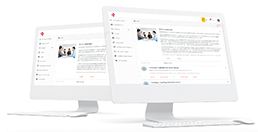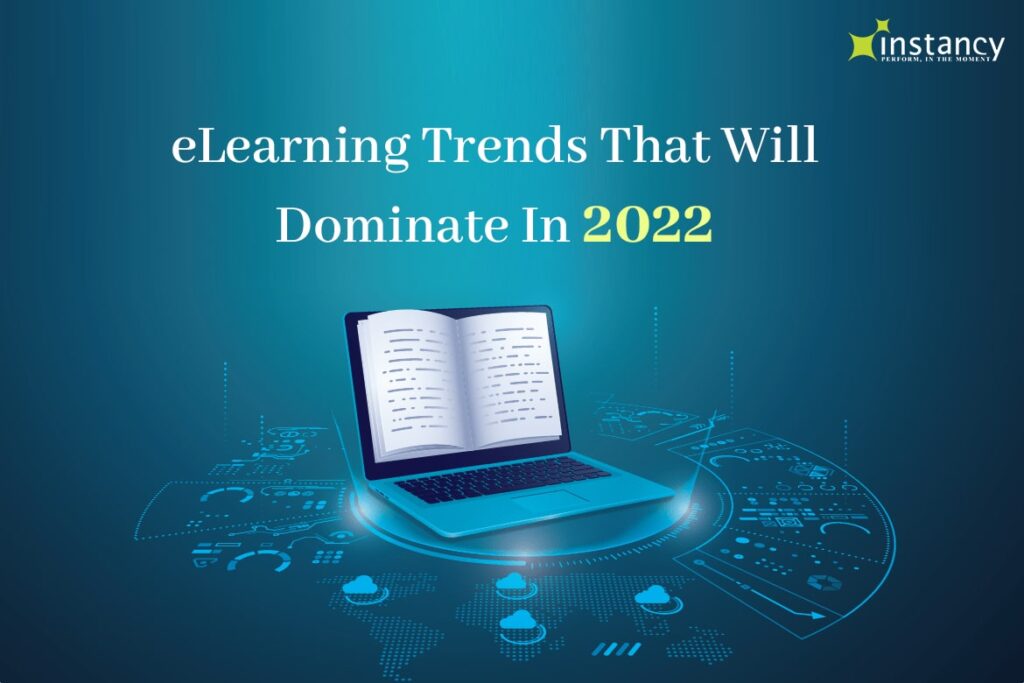Table of Contents
- Mobile Learning
- Microlearning
- Video Learning
- Gamification
- Social Learning and User-Generated Content
- Artificial Intelligence
- Augmented, Virtual Reality, and Metaverse
- Adaptive Learning
- Cloud-based Next Generation Learning Management System
- Learning Experience Platform
- Web 3.0 and Blockchain Technology
- Big Data and Learning Data Analytics
- Conclusion
Introduction
In the past few years, eLearning has increased in popularity. Now more than ever before, people prefer to pursue education and skill development at their pace and convenience. The transition from traditional or physical classroom-based instruction to digital learning is good for the learners and the eLearning business. The advancements in internet-based technologies and new learning methodologies have enhanced the learning experience.
The demand for eLearning and hybrid learning has hit an all-time high due to COVID-19 across corporate, academia, and other sectors. According to analysts, the market size for eLearning will surpass $320 billion by the year 2025.
Mobile Learning
The access to the internet and digital media via mobile devices and smartphones has surpassed personal computers by over two times. The revolution in mobile devices and apps has never been more critical in learning and development, especially in delivering eLearning.
With mobile learning, learners can consume content conveniently anywhere and anytime. Mobile learning personalizes the learning experience. The learners can easily switch between multiple devices and continue the learning process across sessions. This flexibility leads to increased engagement and completion rates, and learners return to review and revisit learning resources.
Mobile learning supports a culture of self-directed and continual learning and assists in keeping the existing knowledge base current and relevant. It also serves as a hub for other forms of immersive learning. It can include various features like microlearning and gamification, which help to enhance interactivity.
Mobile learning is versatile and is used for many types of knowledge and skill development. Multimedia content makes concepts come to life. Animation helps to make information more attractive and highlights the flow of modules. Quizzes and practice drills check learners’ retention levels, while various gaming elements make learning more fun.
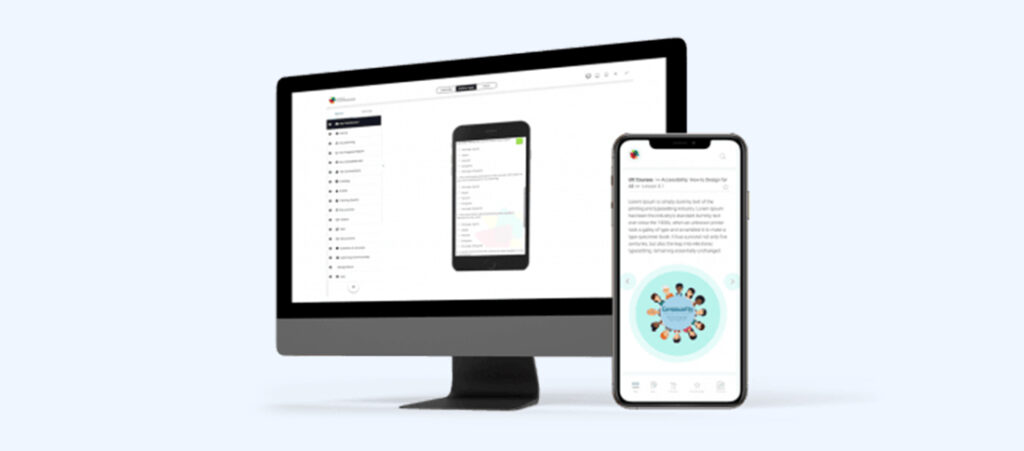
Microlearning
Most people live a hectic life in a fast-paced world, chasing deadlines and achieving goals, yet one can acquire knowledge easily by microlearning. Today, practical training is obstructed by time and diminishing attention spans. Microlearning’s flexibility helps overcome these barriers.
Microlearning refers to quick learning nuggets or short bursts of learning content convenient for learners. Succinct learning morsels (2-7 minutes) substitute lengthy text in microlearning. These nuggets assist learners in achieving a specific goal in their learning journey. Microlearning helps to add value to the learner’s time who otherwise have hectic jobs.
Microlearning is very effective in corporate training. The strategy enables firms to give objective and valuable knowledge customized for each learner.
One can efficiently conduct microlearning via desktop, video, or mobile devices. The use of microlearning has increased and will only continue to expand in 2022.
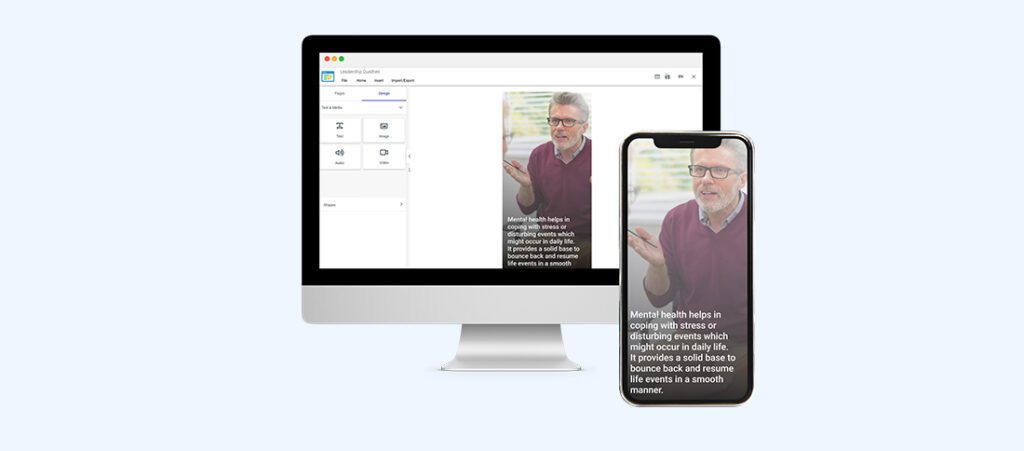
Video Learning (VL)
A Wyzowl poll showed 69% of consumers watch videos to learn about new products and services (Wyzowl, 2021).
VL outperforms traditional eLearning as learners prefer videos that include demonstrations, explainers, interviews, and How-To’s over plain text instructions.
Video is more appealing, dynamic, and entertaining than text. These factors help retain the learner’s attention longer. It also facilitates the rapid dissemination of knowledge, increases content consumption, and improves retention rates compared to text.
The increasing use of interactive films is reshaping the eLearning sector. They increase learners’ participation through examinations and interactivities.
Video content is easily digestible and is delivered in segments as per the user’s convenience. The rise of 360-degree video is the latest trend that helps users gain an immersive experience.

Gamification
Learning is fascinating and consumable when it’s enjoyable.
Gamification refers to engaging game mechanics to increase learner engagement and retention rates in eLearning. Gamification has rapidly become a cornerstone of modern eLearning strategies. Enterprises now use gamification to boost learning effectiveness.
Gamification will reach its peak as income from game-based learning will surpass $28.8 billion by 2025 (Metaari, 2020).
Gamification enables learning designers to develop rewards or incentives which motivate learners to participate actively and complete the learning modules successfully. The motivation through a gift card or a monetary prize stimulates healthy rivalry among employees. Organizations use gamification to encourage people to improve their skill sets and abilities.
For instance, an online course can award learners with points or badges for completing modules. The objective is to motivate learners to outperform their peers’ performance benchmarks and increase training ROI.
According to research conducted at the University of Colorado, gamification users excelled on factual and skill-based assessments compared to users involved in traditional eLearning.
Gamification fosters an emotionally charged and rigorous learning environment in corporate training and eLearning. Gamified eLearning courses aid in the eLearning process and make course information more attractive to learners, increase motivation, and improve retention.
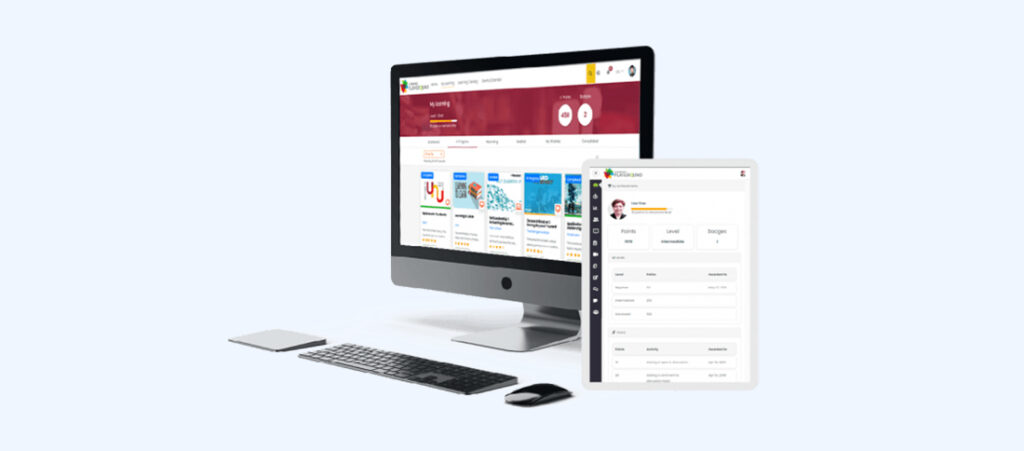
Social Learning and User-Generated Content
Social relationships have been an essential aspect for most individuals since childhood. In fact, even infants acquire basic information from their parents or the people surrounding them.
Social learning applies the fundamental principles of human interaction and group dynamics to the present technological era. The popularity of social media clearly demonstrates the human need to connect and share information and knowledge.
Social learning enables learners to share their knowledge, experience, and learning resources or digital content. It allows learners to connect with peers and experts and seek expertise and advice to solve problems.
Collaboration has never been more productive, efficient, or smooth than with social learning in the digital realm through online forums, class-wide chatrooms, and file-sharing platforms. It is a process of learning that occurs in various settings, including casual talks, discussions, learning circles, and sharing sessions.
Social Learning is cost-effective due to its organic nature. Social training is accessible, efficient, and appropriate for a workplace due to the rise of social platforms and sophisticated communication tools. Teammates can share insight and assistance from any location, including classrooms, homes, or neighboring coffee shops.
Evolving social learning applications increased the number of collaborative tools which will enter the battle for market domination. This form of instruction will dominate the business sector and eLearning.
User-generated content necessitates a centralized repository; it works best in a Learning Management System (LMS) designed to support social learning. Employees gather on one platform to discuss information, questions, and resources. Forums, videos, and images are how corporations can employ user-generated content within an LMS. The LMS sector is expected to provide more appropriate settings for this type of content in the future.
By incorporating user-generated content into an LMS system, users can create current and relevant information to shed light on current challenges and difficulties. Social learning also distributes the ownership of responsibility to knowledge workers in a workplace setting. This augments the capabilities and learning resources provided by the corporate learning and development department.
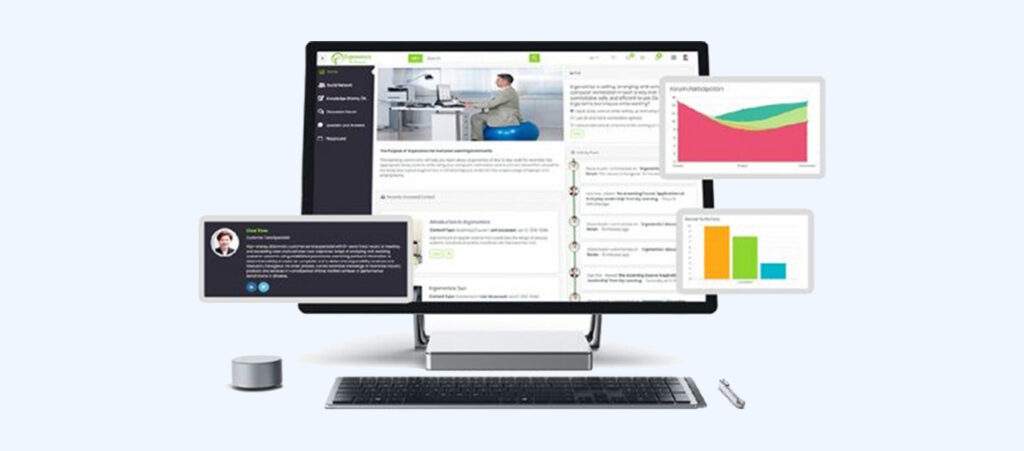
Artificial Intelligence
The presence of AI in personal lives and homes is all too familiar with Apple’s Siri, Microsoft’s Cortana, and your text or voice-enabled chatbots, etc. AI has also found a place in eLearning and is expected to make big inroads into personal and professional skill development. AI-based learning guides students through courses and helps in learning predictions and on-the-fly customization. AI-powered learning systems analyze the learner’s strengths, weaknesses, interests, and competencies to personalize learning for each learner. Learners can use AI-powered learning using speech and natural language, and the system responds to learners like human experts. The Learning and development(L&D) team leverage AI-powered machine learning algorithms to recommend learning modules and assets based on the areas of interest of learners and job-based requirements for a customized learning experience. Meanwhile, enterprises with extensive knowledge repositories are leveraging voice-activated bots to streamline content searches. The bots use AI to explore critical materials quickly. Now L&D teams utilize intelligent robots to help children and learners with disabilities maximize their learning potential. The technology revolution will undoubtedly reshape the eLearning landscape in 2022 and beyond.
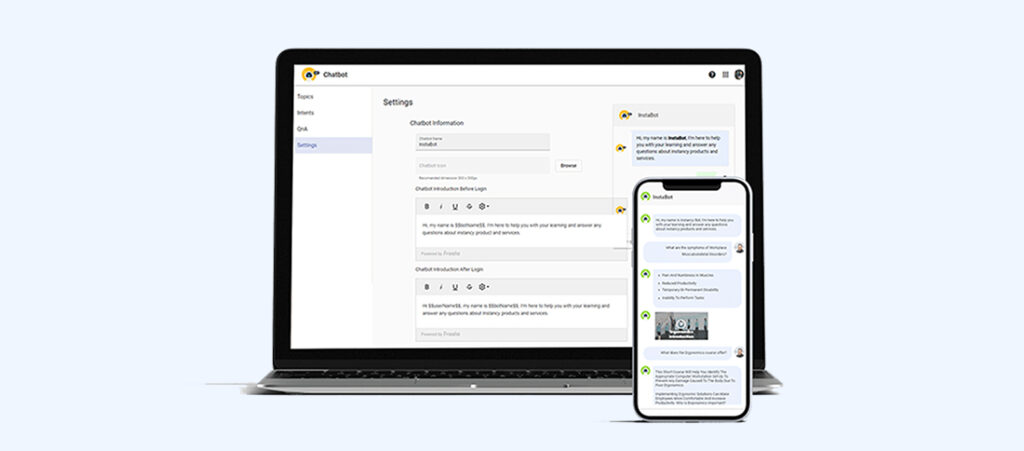
Augmented Reality (AR), Virtual Reality (VR), and Metaverse
360-degree images, graphical overlays, and an explorable interface are a few eLearning features for augmented and virtual reality. Augmented reality (AR) allows learners to observe and interact with their natural surroundings in new ways. Learners can control and engage in real space by moving material with their finger, hand, arm, or body, rather than using a computer interface to explore and manipulate data.
Whereas, Virtual Reality (VR) can transfer learners to different places and even different times due to its highly immersive nature. VR can assist in the recreation of a prior event and allow the user to immerse themselves in the situation as never before.
AR and VR elevate eLearning’s other aspects, including video learning, gamification, and mobile learning to deliver effective and engaging content.
AR and VR provide a real-world, engaging, and immersive online learning environment.
It provides flexibility in location and time for learners. Through Augmented and Virtual Reality, users can use smartphones to learn the languages, culture, and geography of other countries on the go.
Human resource departments can employ AR and VR to create online compliance safety training scenarios. This revolutionary technology allows learners to enter a virtual learning environment, interact with virtual aspects in real-world settings, and even prevent workplace accidents and injuries.
AR -VR technology-based learning can be integrated with learning progress databases and LMS system to track learners’ progress and performance and provides completion scorecards. Tracking performance helps the learners examine the recording, allows accurate self-evaluation feedback, and ensures progress.
Metaverse, a new technology, includes a hybrid of technological features such as Virtual Reality and Augmented Reality in which users “live” and collaborate in a digital realm. It will revolutionize learning and open possibilities by visualizing and manipulating artifacts, spaces, and information to understand concepts holistically.

Adaptive Learning
Every learner has a unique approach to learning. Adaptive learning closes the gap between the learner and the program’s aims to achieve the best result.
Adaptive learning helps to customize materials, activities, projects, and assignments according to the needs of learners.
Adaptive learning has been merged with new technologies like AI and augmented reality which aids customization. Various tools like powerful analytics, confidence-based assessments, and pre-learning testing are helpful in adaptive learning.
Before the emergence of adaptive learning, learners had access to the same modules. This system omitted several crucial elements, such as learners processing content differently and having varying attention spans. So, it was difficult and time-consuming to achieve the desired results.
Then adaptive learning entered the picture and transformed corporate training. Adaptive learning facilitates the development of personalized learning activities for each user.
Adaptive learning relies on adaptive algorithms. It depends on personalized feedback to give knowledge tailored to each learner’s specific needs. As the name implies, this model relies on algorithms to determine the most effective training experience based on the user’s learning tendencies. This adaptive learning style directs learners down alternative learning paths based on their individual preferences and needs.
Adaptive learning ensures that each learner takes the most successful path possible. This way, the user enjoys the process and gets the most out of it. On the other hand, businesses can optimize resources consciously to achieve the highest possible return on investment in training. Over time, this trend will only grow in strength.
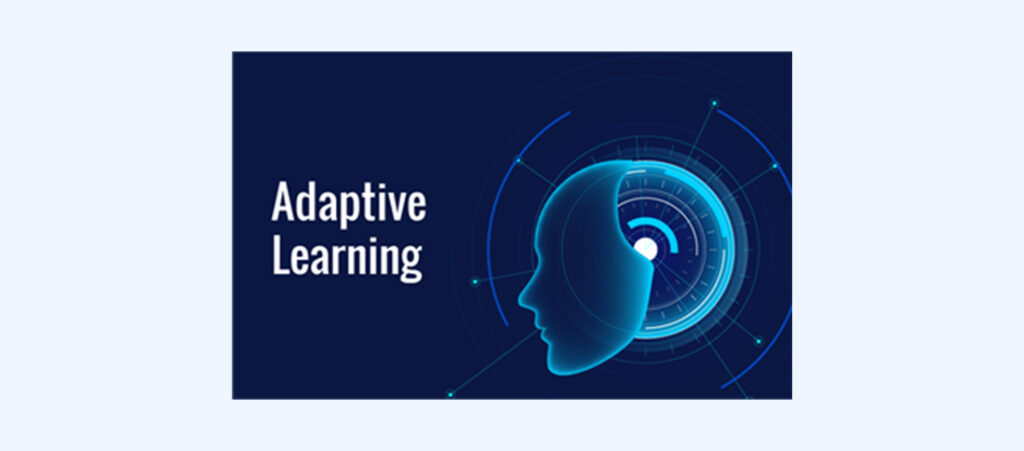
Cloud-based Next Generation Learning Management System
A LinkedIn Workplace Learning Report states that 57% of L&D departments will increase their spending on online learning in the coming year.
A cloud-based Learning Management System (LMS) is a platform for designing and distributing courses and administering learning programs for the extended enterprise. It enables businesses to store and track online training resources to improve efficiency. Data like exam scores or training time spent is easily accessible through LMS. LMS also includes monitoring tools for verifying courses taken, learners’ progress, and learners’ skill development areas.
Discussion forums in LMS systems enable teams to post questions and answers to common issues, share best practices, participate in debates, or inspire each other. Learners can discuss challenging problems or acquire experience through their lessons.
Real-time data is critical for the analysis of a learning program. LMS data promotes continual improvement for employers. Managers can track the performance of individual employees, and LMS enables them to determine the timing for additional support or attention to specific learners.
Learning Management Systems automate the learning processes, provide better data analytics and visualization, assist organizations in improving learning outcomes, and increase return on investment (ROI) in training.

Learning Experience Platform
The eLearning and corporate training industries have seen immense growth over the last half-decade. Lately, trainers teach eLearning using custom-built tools and technologies which enable highly individualized instruction.
The Learning Experience Platform (LXP) is a learning software application on the web and mobile devices with a tailored learning experience. LXP shows combined learning content from different sources, recommending and providing it via AI-assisted delivery across contact points like desktop applications, mobile learning apps, etc.
Learners are not bound to catalog content but can quickly seek out exciting content independently. An LXP creates enhanced personalization and expanded learning possibilities by integration with third-party platforms such as Google Services, YouTube, social media, and communication tools.
LXPs can provide highly adaptive, contextualized learning experiences based on a study of job performance, skill gaps, and on-the-job competencies using intelligent knowledge discovery (IKD).
Training delivered through an LXP is typically more:
- Responsive
- Relevant
- Pervasive in delivery

Web 3.0 and Blockchain Technology
While Web 1.0 was about making information readily available through the internet or network or computers and Web 2.0 enabled users to create dynamic web applications like social media, the internet is evolving to the next phase called Web 3.0
Web 3.0 is an ’intelligent’ internet and will be based on a machine-based understanding of data, capable of digesting information with near-human-like intelligence. It is a breakthrough toward a decentralized web where humans and AI collaborate on content generation and decision-making. It will revolutionize sharing, storing, and moving data in the digital world.
Online educators can use it for course building, learner support, evaluation, and record keeping.
Blockchain is a cornerstone technology within the evolving notion of Web 3.0. Blockchain can identify learners better while protecting their privacy and information in the eLearning industry. It also aids in funding education and recognizing high-quality work by users.
Businesses use blockchain technology to issue and store easily verifiable credentials and certifications. It helps in credit transfers between institutions and validating transactions and payments for content services supplied by individuals and organizations.

Big Data and Learning Data Analytics
Data collection, analysis, and reporting capabilities in LMS and LRS (Learning Record Stores) are becoming increasingly powerful, sophisticated, and far-reaching. Organizations find that data analytics, mining, and inferencing improve their learning programs, success, and job performance. Modern learning record stores track a large volume of learning progress data and help measure learning success.
Data from the LMS and LRS that is useful to the business include:
- Participation: Are the students as engaged with the material as you had hoped?
- Success Rate: Are your students performing as well in the assessments as you had hoped? The data will be summarized and presented in an easy-to-understand style by the LMS Learning Assessment capabilities.
- Success Exposure Ratio: How much time does a specific topic require for your learner to grasp it?
- Surveys: Gathering feedback from learners directly from the source is a fantastic approach to improving any learning module.

Conclusion
As technology advances, the variety and quality of content created should follow suit. All eLearning experts agree that we will observe or participate directly in content evolution and adaptation to new eLearning trends. Due to the emergence of these trends, eLearning has become a much more ubiquitous, dynamic, and participatory process for learners, learning developers, and managers. The year 2022 is expected to be the year of eLearning innovation and proliferation in the corporate, academic, and other spheres.


